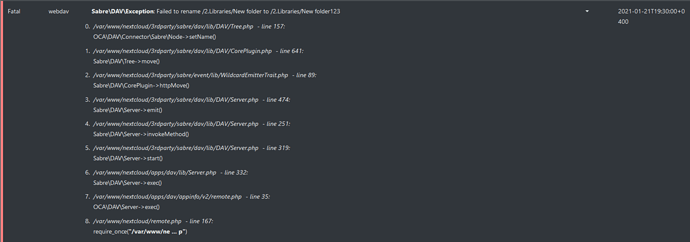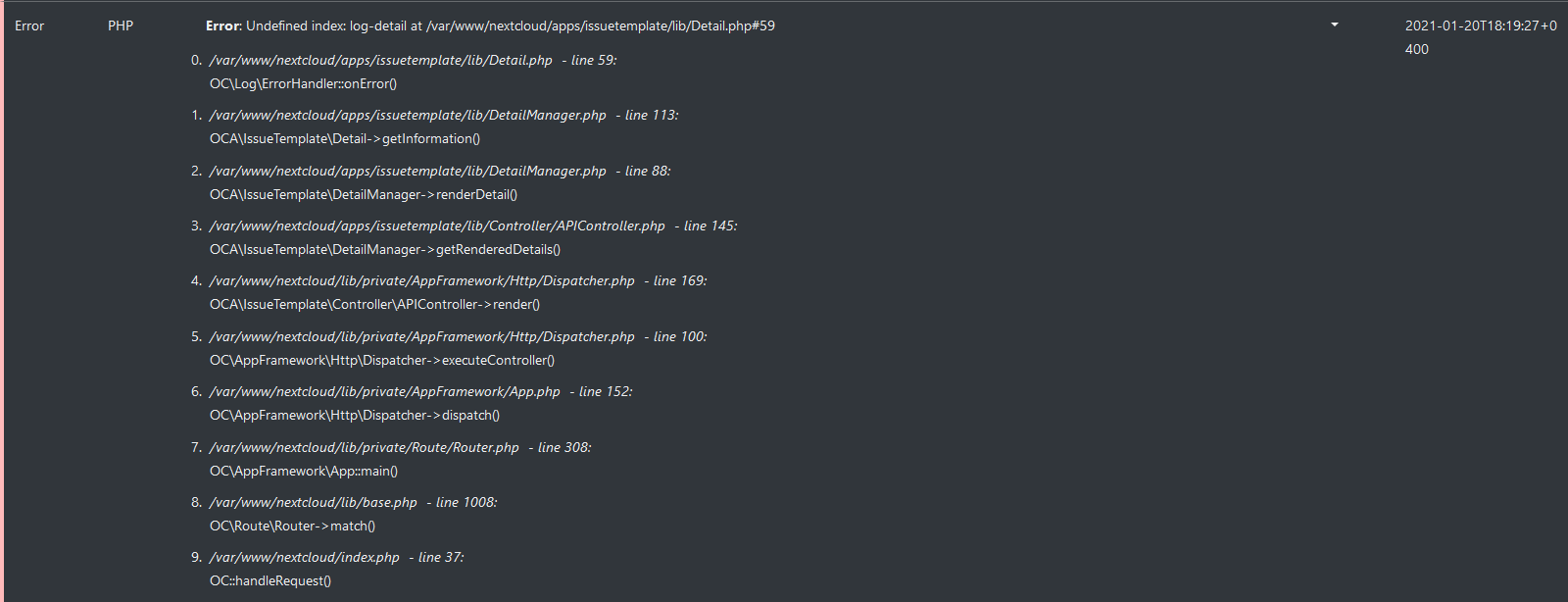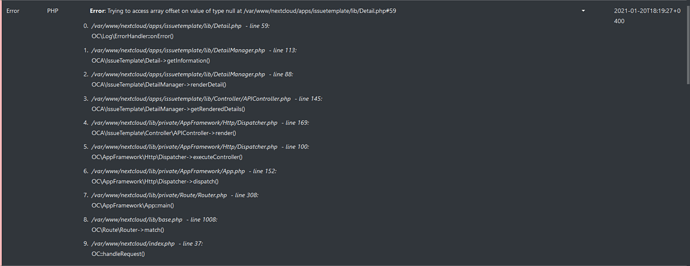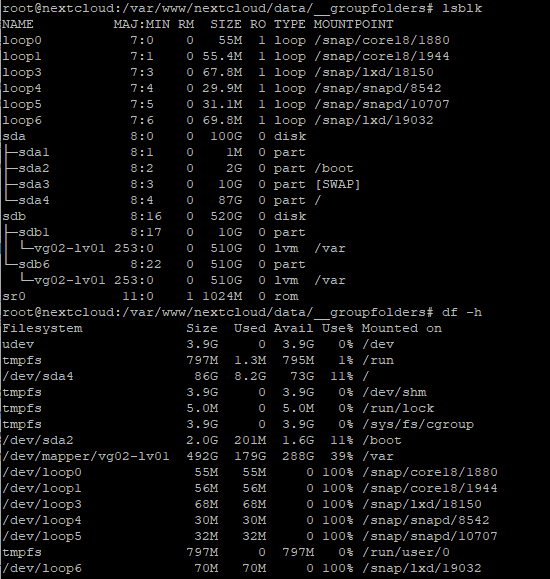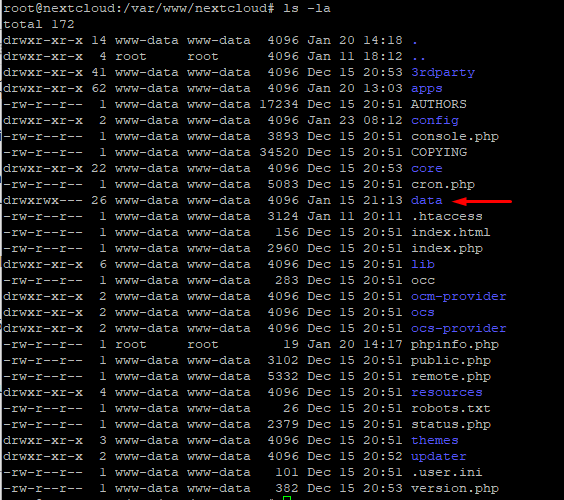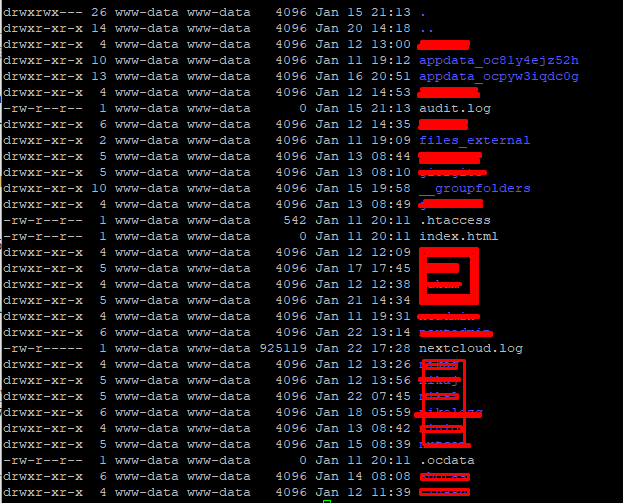Steps to reproduce
• Map Nextcloud in Windows Explorer using an account that doesn’t have “delete” permission.
• Create new folder and give it a custom name
Expected behaviour
• The folder is created using a custom name
• The user shouldn’t be able to delete the folder
Actual behaviour
• The user gets an error saying: Can’t read from the source file or disk.
• The user gets the same error while trying to rename existing folder.
Server configuration detail
Operating system: Linux 5.4.0-60-generic #67-Ubuntu SMP Tue Jan 5 18:31:36 UTC 2021 x86_64
Webserver: Apache/2.4.41 (Ubuntu) (apache2handler)
Database: mysql 10.3.25
PHP version:
7.4.3
Modules loaded: Core, date, libxml, openssl, pcre, zlib, filter, hash, Reflection, SPL, session, standard, sodium, apache2handler, mysqlnd, PDO, xml, bcmath, bz2, calendar, ctype, curl, dom, mbstring, FFI, fileinfo, ftp, gd, gettext, gmp, iconv, igbinary, imagick, intl, json, exif, mysqli, pdo_mysql, Phar, posix, readline, redis, shmop, SimpleXML, sockets, sysvmsg, sysvsem, sysvshm, tokenizer, xmlreader, xmlwriter, xsl, zip, Zend OPcache
Nextcloud version: 20.0.4 - 20.0.4.0
Updated from an older Nextcloud/ownCloud or fresh install: Fresh install
Where did you install Nextcloud from: Server package archive
Signing status
Array
(
)
List of activated apps
Enabled:
- accessibility: 1.6.0
- admin_audit: 1.10.0
- breezedark: 20.0.2
- bruteforcesettings: 2.0.1
- calendar: 2.1.3
- cloud_federation_api: 1.3.0
- comments: 1.10.0
- contacts: 3.4.3
- contactsinteraction: 1.1.0
- customproperties: 1.0.1
- dav: 1.16.2
- documentserver_community: 0.1.8
- external: 3.7.1
- federatedfilesharing: 1.10.2
- federation: 1.10.1
- files: 1.15.0
- files_pdfviewer: 2.0.1
- files_rightclick: 0.17.0
- files_sharing: 1.12.1
- files_trashbin: 1.10.1
- files_versions: 1.13.0
- files_videoplayer: 1.9.0
- firstrunwizard: 2.9.0
- groupfolders: 8.2.0
- issuetemplate: 0.7.0
- logreader: 2.5.0
- lookup_server_connector: 1.8.0
- nextcloud_announcements: 1.9.0
- notifications: 2.8.0
- oauth2: 1.8.0
- onlyoffice: 6.2.0
- password_policy: 1.10.1
- photos: 1.2.1
- privacy: 1.4.0
- provisioning_api: 1.10.0
- recommendations: 0.8.0
- serverinfo: 1.10.0
- settings: 1.2.0
- sharebymail: 1.10.0
- support: 1.3.0
- survey_client: 1.8.0
- systemtags: 1.10.0
- text: 3.1.0
- theming: 1.11.0
- twofactor_backupcodes: 1.9.0
- twofactor_totp: 5.0.0
- updatenotification: 1.10.0
- user_status: 1.0.1
- viewer: 1.4.0
- weather_status: 1.0.0
- workflowengine: 2.2.0
Disabled:
- activity
- dashboard
- deck
- encryption
- files_external
- registration
- richdocuments
- richdocumentscode
- user_ldap
Configuration (config/config.php)
{
"instanceid": "***REMOVED SENSITIVE VALUE***",
"passwordsalt": "***REMOVED SENSITIVE VALUE***",
"secret": "***REMOVED SENSITIVE VALUE***",
"trusted_domains": [
"***REMOVED SENSITIVE VALUE***",
"***REMOVED SENSITIVE VALUE***"
],
"datadirectory": "***REMOVED SENSITIVE VALUE***",
"dbtype": "mysql",
"version": "20.0.4.0",
"overwrite.cli.url": "https:\/\/cloud.teamtwo.ge",
"dbname": "***REMOVED SENSITIVE VALUE***",
"dbhost": "***REMOVED SENSITIVE VALUE***",
"dbport": "",
"dbtableprefix": "oc_",
"mysql.utf8mb4": true,
"dbuser": "***REMOVED SENSITIVE VALUE***",
"dbpassword": "***REMOVED SENSITIVE VALUE***",
"installed": true,
"allow_local_remote_servers": true,
"memcache.distributed": "\\OC\\Memcache\\Redis",
"memcache.local": "\\OC\\Memcache\\Redis",
"memcache.locking": "\\OC\\Memcache\\Redis",
"redis": {
"host": "***REMOVED SENSITIVE VALUE***",
"port": 6379
}
}
Are you using external storage, if yes which one: local/smb/sftp/…
Are you using encryption:
Are you using an external user-backend, if yes which one: Webdav
Client configuration
Browser: Mozilla/5.0 (Windows NT 10.0; Win64; x64; rv:84.0) Gecko/20100101 Firefox/84.0
Operating system:
Logs
I can provide logs separately.
